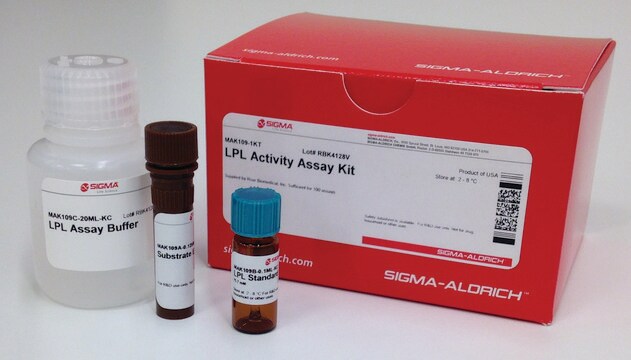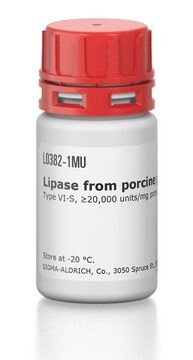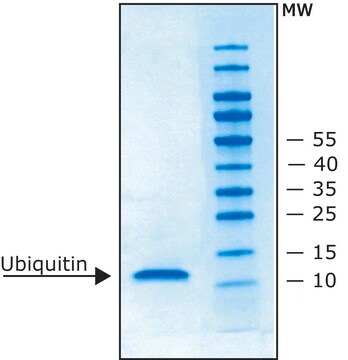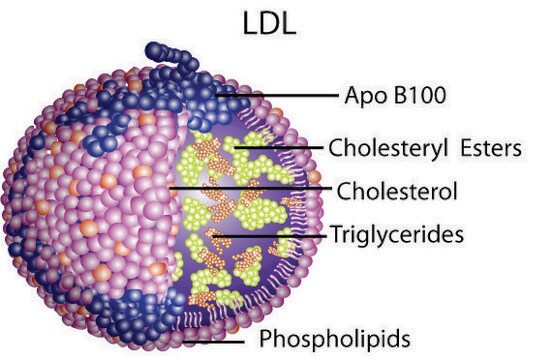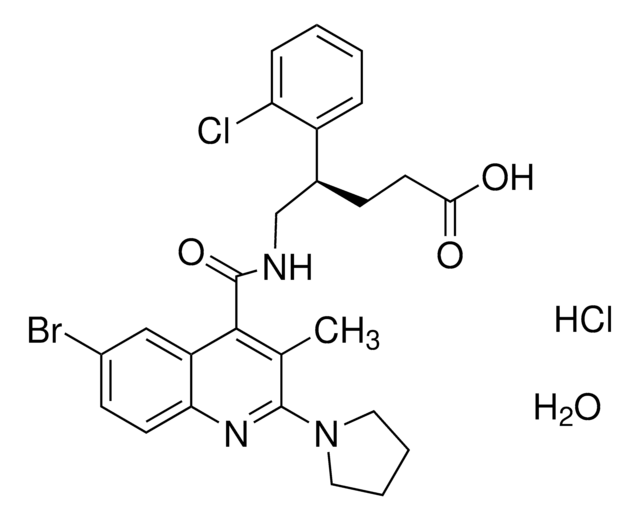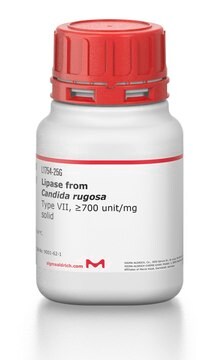L2254
Lipoprotein Lipase from bovine milk
ammonium sulfate suspension, ≥2,000 units/mg protein (BCA)
Sinonimo/i:
LPL, Phospholipase A1, Diacylglycerol acylhydrolase, Diacylglycerol lipase
About This Item
Prodotti consigliati
Origine biologica
bovine milk
Livello qualitativo
Stato
ammonium sulfate suspension
Attività specifica
≥2,000 units/mg protein (BCA)
Temperatura di conservazione
2-8°C
Descrizione generale
Lipoprotein Lipase (LPL) from bovine milk is a glycoprotein. It exists as a homodimer and comprises two N-linked oligosaccharides. It is heat-labile.Lipoprotein lipase is an enzyme found on the surface of vascular endothelial cells, where it is anchored to capillary walls. It is mainly present in adipose tissue, heart, and muscle tissue. It is synthesized by extrahepatic tissues, particularly adipocytes, and the gene encoding the protein is situated on chromosome 8p22.
Applicazioni
- as a supplement to test its effect on DiI (1,1′-dioctadecyl-3,3,3′-tetramethyl-indocarbocyanine perchlorate)- very-low-density lipoprotein (VLDL) uptake in breast cancer MDA-MB-231 cells.
- to treat human brain microvascular endothelial cells (HBMECs) for the lipolysis of triglyceride-rich lipoproteins (TGRL).
- to test its effect on gene expression in normal human astrocytes.
- in primary hepatocyte isolation and lipoprotein binding to identify Sulf2 inhibition in T2DM mice for improving diabetic dyslipidemia.
- in transforming growth factor-beta (TGF-β1) immunoassay to test if the TGF-β signaling system regulates the up-regulation and activation of activating transcription factor 3 (ATF3) in human aortic endothelial cells (HAEC) induced by lipolysis products.
- in human TGRL isolation.
- in in vitro lipolysis assay with HSPG-bound LPL, to investigate the effect of human apoE2 (Lys146→Gln) on lipoprotein metabolism.
- in hydrolysis of triglycerides.
- in developing in vitro model of gastrointestinal digestion to investigate the effects of chlorophyll on lipid digestion.
Azioni biochim/fisiol
Definizione di unità
Stato fisico
Nota sulla preparazione
Codice della classe di stoccaggio
11 - Combustible Solids
Classe di pericolosità dell'acqua (WGK)
WGK 3
Punto d’infiammabilità (°F)
Not applicable
Punto d’infiammabilità (°C)
Not applicable
Dispositivi di protezione individuale
Eyeshields, Gloves, type N95 (US)
Scegli una delle versioni più recenti:
Possiedi già questo prodotto?
I documenti relativi ai prodotti acquistati recentemente sono disponibili nell’Archivio dei documenti.
I clienti hanno visto anche
Articoli
The potential for the prevention and treatment of cardiovascular disease through increased dietary intake of omega-3 (w-3) fish oils is not a recent scientific discovery.
Lipid Induced Insulin Resistance
Instructions for working with enzymes supplied as ammonium sulfate suspensions
Il team dei nostri ricercatori vanta grande esperienza in tutte le aree della ricerca quali Life Science, scienza dei materiali, sintesi chimica, cromatografia, discipline analitiche, ecc..
Contatta l'Assistenza Tecnica.


